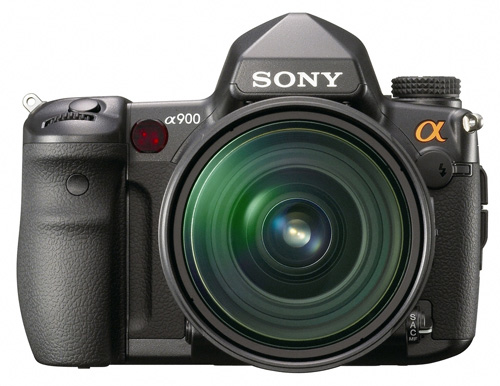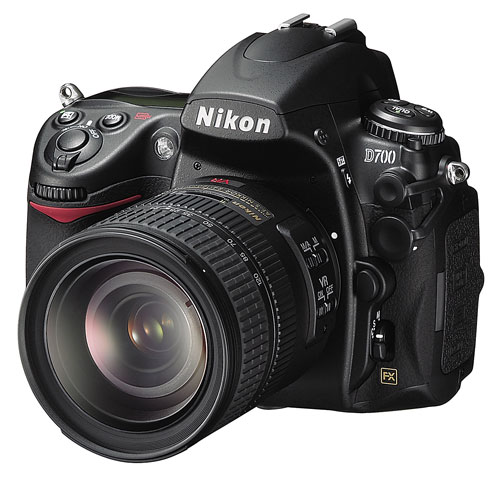Sony A900: A Closer Look at 24.6MP Resolution and Noise
by Wesley Fink on October 27, 2008 2:00 AM EST- Posted in
- Digital Camera
When we published the Sony A900 Full-Frame: Hands-On Preview several weeks ago, the excitement about the world's highest resolution full-frame DSLR was evident in every photography forum you could find on the web. It was not as if the new Sony flagship model was a surprise, because the specifications had been detailed in broad strokes in the year since Sony announced the development of a 24.6MP 24x36mm full-frame sensor. The launch just filled in the blanks with details and answered questions like whether Sony could get their body Image Stabilization to work on a full-frame. The answer was yes they could.
Just as quickly everyone began wondering whether that huge 24.6MP sensor would be any good at low-light high ISO photography, which had risen to the full-frame forefront with the Nikon D3 and D700. The Nikon's are half the 24.6 MP resolution, but with a standard range to ISO 6400 and extensions to a staggering 25600. Everyone wondered whether the Sony A900 could compete with Nikon's full-frame, designed for "available darkness" as some liked to tease.

Fortunately, it was not a long wait until we could buy a Sony A900, and with a production model in hand some of the questions can begin to be explored. It has already been clearly established in every review that the Sony A900 is the highest resolution full-frame that you can buy - even out-resolving the $8000 Canon 1DS Mark III with a 21.6MP sensor. That resolution performance is amazing when you consider the 24.6MP Sony A900 is just $3000, and it gives studio photographers a new choice - since they normally work in the A900 sweet range, which is broadly acknowledged to be ISO 100-800.

What is not as clear is how suitable the Sony A900 is for action photographers. The A900 features dual Sony BIONZ processors and it features a real 5 FPS speed, which most consider remarkably fast for a full-frame DSLR with 24.6MP resolution. The A900 also features the first body-integrated IS system in a full-frame camera. Sony SteadyShot is said to be capable of improving hand-held shooting by 2 to 4 stops depending on the lens. Most important is that SteadyShot is available and works with any lens that you mount on the Sony A900. This is particularly important in very large aperture lenses, which are often prohibitively expensive for optical OS since such huge elements have to be compensated.
With 5 FPS burst speed and always available IS, the A900 on the surface appears a good choice for action and sports. However, a sensor that is too noisy at high ISO could limit the usefulness of the A900 in action shooting.


That is the reason for these tests - to look more closely at noise of the A900 sensor. Noise will be compared to the Nikon D700 and Canon 5D, which are the only full-frame DSLRs you can currently buy other than the A900. Canon has announced the 5D Mark II but that camera is not yet shipping and is not expected in the market until late November.

With the announcement of the A900 Sony also announced an update to firmware Version 4 for the 12.3MP Sony A700 that incorporates all they learned in developing the A900. Our final noise comparison will be the Sony A700 to the full-frame A900.










45 Comments
View All Comments
kalow - Monday, November 17, 2008 - link
Hi Wesley,Can you confirm if your a700 has firmware 4? I looked into the exif and it says v03
Gantlett - Friday, October 31, 2008 - link
The photographed subjects in the photo reviews pose 0 challenge for my VGA camera, let alone a multi-megapixel multi-thousand $ professional DSLR.With all due respect, I think AnandTech.com should focus on computers and not photography (even if they really like digital photography...)
oldscotch - Wednesday, October 29, 2008 - link
Hi there, thanks for the update. Nice to see informed and unbiased evaluations of the s900.I just had a couple of questions about the test conditions, or maybe I missed them? Mostly, are these test results raw conversions? or are they jpegs out of the camera? Also curious what lenses were used for each camera.
I find the a900 vs. a700 test most interesting, I've been looking for a controlled comparison of the two at higher isos. The fact that the a700 actually takes cleaner shots at higher isos leaves me believing that the noise out of the a900 is largely due to its processing - meaning it can be improved upon (and there's definitely room for improvement, even with raw).
Do you know what might have caused the different colours on the a700 though?
Thanks again,
Wesley Fink - Wednesday, October 29, 2008 - link
All test shots used each manufacturer's prime 50mm f/1.4 lens (Canon, Nikon, Sony/Minolta). Test conditions are in the test introduction, but all shots at at f/4 with shutter speed varied as ISO changes. This provides a constant depth-of-field. The tripod location was the same in all shots and a shutter timer was used to minimize camera shake.As for the samples images on the last page we used the famous Minolta beer can (70-210mm f/4), a Sigma 105mm f/2.8 EX Macro, a Minolta/Sony 24-105mm f/3.5-4.5, and a 50mm f/1.4 for the various shots. You can determine the lens from this list by looking at the EXIF data in each full-sized image.
We used the Tungsten WB preset for the test shots on all tested cameras. It seems clear that the A900 and A700 have a different color temperature default for Tungsten. ALL shots used camera defaults and in-camera JPEG processing. RAW is very useful in many situations, but with a new camera like the A900 which RAW converter is the best choice for processing is very much a question mark. A couple of PROs we know who are shooting the A900 in their studio use Capture One RAW conversion software.
jamesbond007 - Wednesday, October 29, 2008 - link
As a semi-pro, I find Sony's images to be very soft. For a lens with an aperture capable of f/1.4, one would at least HOPE it would be sharp by f/4 or especially f/5.6. It is appropriate to offer a client a variety of images, including various crops. I would be ashamed if a $3,000 body and added glass could not deliver such capable images. Additionally, Sony's noise performance leaves much to be desired.Granted, while lighting is by far the most important element of photography, sharpness/AF accuracy is among my top priorities as well. Although I am sure no Unsharpen Mask or High-pass sharpening was applied to any of the sample images, Sony's still appear far softer than what I'm accustomed to.
Wesley Fink - Wednesday, October 29, 2008 - link
The results would also likely improve in sharpness if we had used the microadjust feature to tweak AF for each lens. I have seen results of the 70-210mm f/4 before and after microadjust and it certainly did improve performance, so that may also be the case with the f/1.4.We have been working with the A900 just over a week and tweaking the microadjust can be very time-consuming with lots of samples to carefully evaluate. Sony makes this even more difficult since there is no zoom or magnify feature in Intelligent preview. That feature alone would have made the micro-adjust faster.
jamesbond007 - Thursday, October 30, 2008 - link
Really, even at f/4? I've seen some slight variations with faster lenses (f/1.2-f/2.8) using the microadjustment tweaks inside the custom settings, but I really have my doubts at f/4 or even f/5.6 if a noticeable difference would be visible. Perhaps the lens you had was simply a lemon. :Pstrikeback03 - Thursday, October 30, 2008 - link
Remember, the full-frame sensor has a more shallow DOF at a given aperture value than APS-C, so if you are used to seeing shifts at f/2.8 on APS-C, that is ballpark what you can expect on FF at f/4. Check the DPreview images from the Sony and Canon 1DsIII, both sensors are high enough resolution to show parts of their test scene moving in and out of the plane of focus which all looked in focus in previous tests of lower-resolution sensors.forest23 - Friday, August 14, 2009 - link
Oh no , not someone else who believes that putting a lens ona half frame camera gives greater depth of field. But see Coxes Optics
1974 pages 68-97
Wesley Fink - Thursday, October 30, 2008 - link
The Minolta 50mm f/1.4 is the same lens used in noise tests of the Sony A700 and the past review of the Sony A200. We have 50mm f/1.4 lenses available for all tested brands except Olympus/Panasonic. Because of the 2X lens factor we use an Olympus 35mm Macro lens as the test lens for 4/3 cameras.